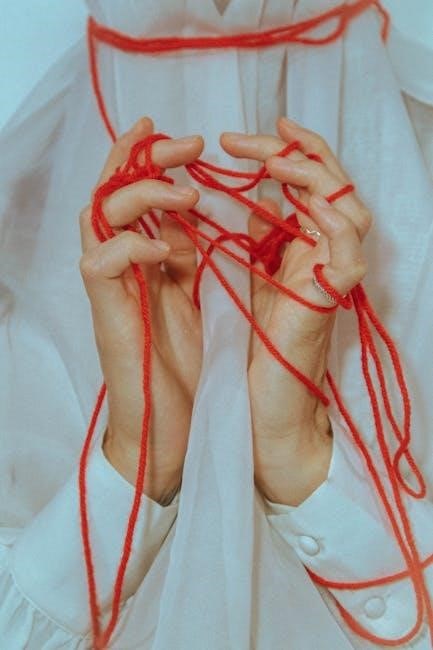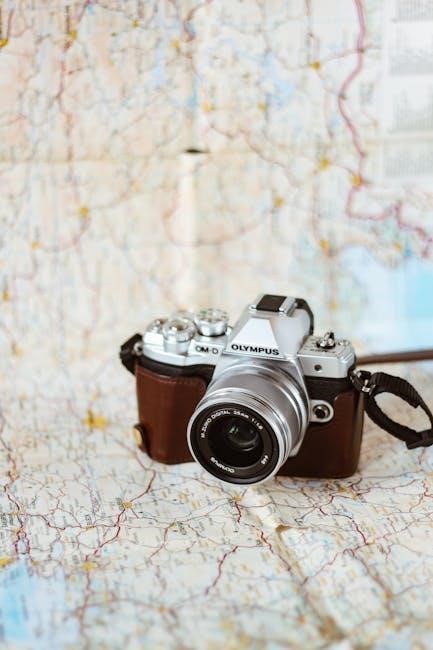The Gantala Panchangam 2024-2025, also known as the Krodhi Nama Samvatsara, is a traditional Telugu almanac providing lunar and solar cycle details, auspicious dates, and cultural significance for the year.
What is a Panchangam?
A Panchangam is a traditional Hindu almanac detailing lunar and solar cycles, auspicious timings, and cultural events. It guides rituals, festivals, and daily activities, offering insights into Tithi (lunar day), Nakshatra (star), and Yoga (planetary alignment). This ancient calendar is revered for its spiritual and practical significance, helping individuals align their actions with celestial rhythms for harmony and prosperity.
The Significance of Gantala Panchangam in Telugu Culture
Gantala Panchangam holds profound cultural and spiritual significance in Telugu tradition, guiding festivals, rituals, and daily life. It marks Ugadi, the Telugu New Year, and outlines auspicious timings for ceremonies like marriages and house warmings. This almanac preserves Vedic wisdom, connecting generations to their heritage and helping communities align their celebrations with celestial rhythms and cultural values seamlessly.

Key Features of Gantala Panchangam 2024-2025
Gantala Panchangam 2024-2025 includes lunar and solar cycles, auspicious dates, planetary positions, sunrise/sunset timings, and cultural events like Ugadi, providing a comprehensive guide for religious and practical planning.
Lunar and Solar Cycle Calculations
The Gantala Panchangam 2024-2025 meticulously details lunar and solar cycles, including phases of the moon, eclipses, and planetary transits. It aligns traditional Vedic calculations with modern astronomical data, ensuring accuracy for religious rituals and daily planning. The almanac provides precise timings for sunrise, sunset, and moonrise, essential for spiritual and cultural observances throughout the year.
Auspicious Dates and Festivals
The Gantala Panchangam 2024-2025 highlights auspicious dates for festivals like Ugadi, Dasara, and Deepavali, along with sacred rituals and ceremonies. It provides detailed timing for muhurtas, ensuring optimal planning for religious observances and cultural celebrations. This section is a vital guide for Telugu communities to align their traditions with the almanac’s precise calendar, fostering spiritual harmony and cultural continuity throughout the year.
Planetary Positions and Astrological Insights
The Gantala Panchangam 2024-2025 offers detailed planetary positions, predicting their influences on zodiac signs. It provides insights into auspicious transits, eclipses, and astrological events, helping individuals understand celestial impacts on their lives. This section is a valuable resource for astrological guidance, enabling users to make informed decisions aligned with cosmic alignments and Vedic principles throughout the year.
Importance of Gantala Panchangam in Daily Life
Gantala Panchangam guides daily routines, rituals, and decision-making by providing auspicious timings, enhancing spiritual growth, and ensuring alignment with cosmic and cultural traditions for a harmonious life.
spiritual and Religious Significance
Gantala Panchangam holds profound spiritual importance, serving as a sacred guide for aligning daily routines with celestial rhythms. It provides Tithi, Nakshatra, and Yoga details, essential for planning rituals and ceremonies. Rooted in Vedic astrology, it bridges ancient traditions with modern life, helping devotees connect with divine forces and maintain cultural heritage. Its insights deepen spiritual practices and foster a harmonious lifestyle.
Practical Uses for Planning and Decision-Making
Gantala Panchangam is a vital tool for planning daily routines, ceremonies, and festivals. It provides detailed lunar and solar cycle timings, aiding in selecting auspicious dates for weddings, housewarmings, and other events. The calendar also offers sunrise and sunset times, enabling precise scheduling. Its practical insights help align human activities with celestial rhythms, ensuring harmony and success in personal and professional life.

How to Read and Interpret Gantala Panchangam
Gantala Panchangam is read by understanding Tithi, Nakshatra, and Yoga, which guide lunar and solar cycles. These elements help determine auspicious timings for rituals and daily activities, aligning human endeavors with celestial rhythms for optimal outcomes.
Understanding Tithi, Nakshatra, and Yoga
Tithi represents the lunar day, Nakshatra the star constellation, and Yoga the alignment of sun and moon. Together, they form the core of Gantala Panchangam, guiding timings for rituals, ceremonies, and daily activities. Accurate interpretation ensures harmony with celestial influences, essential for spiritual and practical planning, and is a cornerstone of Telugu astrological traditions for determining auspicious moments and personal decisions.
Interpreting Auspicious and Inauspicious Timings
Auspicious timings in Gantala Panchangam are determined by aligning Tithi, Nakshatra, and Yoga, ensuring harmony for ceremonies and decisions. Inauspicious periods, marked by unfavorable celestial alignments, are avoided for significant events. This ancient system guides users in selecting optimal times for rituals, marriages, and other milestones, blending astrological wisdom with practical application to enhance prosperity and minimize obstacles in daily life and spiritual pursuits.

Downloading Gantala Panchangam 2024-2025 PDF
The Gantala Panchangam 2024-2025 PDF is available for free download from various sources, offering easy access to auspicious timings, festivals, and planetary positions for planning and spiritual guidance.
Free Download Options and Sources
The Gantala Panchangam 2024-2025 PDF is available for free download from various sources, including TTD and Butte Vari Panchangam. These reputable platforms offer direct links to access the almanac, ensuring users can easily obtain the calendar for planning festivals, auspicious timings, and spiritual guidance. Downloading is straightforward, making it accessible to everyone.
Steps to Access the PDF Version
To access the Gantala Panchangam 2024-2025 PDF, visit official websites like TTD or Butte Vari Panchangam. Search for the almanac, locate the download link, and select the correct version. Follow the prompts to complete the download, ensuring you have the latest edition for accurate planning and spiritual guidance throughout the year.

Major Festivals and Events in Gantala Panchangam 2024-2025
The Gantala Panchangam 2024-2025 highlights major festivals like Ugadi, the Telugu New Year, and other significant celebrations, providing dates and cultural context for each event.
Ugadi and Its Cultural Importance
Ugadi, the Telugu New Year, is celebrated on March 30, 2025, marking the beginning of the Krodhi Nama Samvatsara. It symbolizes renewal and prosperity, with rituals like Panchangam Pathanam, a must for all Telugu people. Families gather for traditional meals and cultural practices, reflecting the deep-rooted heritage and spiritual significance of this festival, which guides both spiritual and practical life throughout the year.
Other Key Festivals and Celebrations
Besides Ugadi, the Gantala Panchangam highlights other significant festivals like Dasara, Diwali, and Sankranti, which hold cultural and spiritual importance. These celebrations, rooted in tradition, are observed with rituals, family gatherings, and communal prayers. The Panchangam provides auspicious timings, enabling devotees to plan their ceremonies and festivities in harmony with lunar and solar cycles, ensuring spiritual and cultural alignment throughout the year.
Muhurtha Calculations in Gantala Panchangam
Gantala Panchangam provides detailed Muhurtha calculations, helping select auspicious timings for ceremonies, marriages, and house warmings, ensuring alignment with favorable lunar and solar positions for prosperity.
Choosing Auspicious Times for Ceremonies
Gantala Panchangam aids in selecting optimal timings for ceremonies, ensuring alignment with favorable Tithi, Nakshatra, and Yoga. By analyzing lunar and solar positions, it helps determine Muhurtha for marriages, house warmings, and rituals, promoting prosperity and success. Its detailed calculations guide users in planning significant life events, adhering to Vedic traditions and cultural practices seamlessly.
Marriage, House Warming, and Other Ceremonies
The Gantala Panchangam is essential for planning significant ceremonies like marriages and house warmings. It provides detailed Tithi, Nakshatra, and Yoga calculations to ensure auspicious timing. This almanac helps in selecting favorable dates, promoting prosperity and harmony in family life, and adhering to Vedic traditions and cultural practices.

Sunrise and Sunset Timings
Gantala Panchangam provides precise sunrise and sunset timings, essential for aligning daily rituals, prayers, and routines with natural cycles, ensuring harmony inTelugu cultural and spiritual practices.
Daily and Monthly Timings
Gantala Panchangam 2024-2025 provides precise daily and monthly sunrise and sunset timings, aiding in aligning rituals and routines with celestial cycles. It includes lunar dates, ensuring accurate scheduling of religious and cultural practices throughout the year. Monthly charts offer detailed timing insights, helping users plan auspicious events and daily activities efficiently, rooted in traditional Telugu customs and astrological principles.
Importance in Rituals and Daily Routines
Gantala Panchangam 2024-2025 plays a vital role in aligning rituals and routines with celestial cycles. It provides precise timings for sunrise, sunset, and lunar phases, ensuring proper execution of religious ceremonies and daily practices. This alignment fosters harmony and spiritual balance, making it an indispensable guide for cultural and religious observances in the Telugu tradition, enhancing both spiritual growth and practical daily planning.

Planetary Positions and Predictions
Gantala Panchangam 2024-2025 provides detailed insights into planetary positions, offering astrological predictions for each zodiac sign. It highlights key planets like Sun, Moon, and Jupiter, influencing life events and decisions.
Key Planets and Their Influences
The Gantala Panchangam 2024-2025 highlights key planets like Sun, Moon, Mercury, Venus, Mars, Jupiter, and Saturn, detailing their celestial movements and influences on human life. Sun signifies authority and strength, while Moon governs emotions. Mercury impacts communication, Venus influences relationships, Mars drives energy, Jupiter expands opportunities, and Saturn enforces discipline. These planetary positions guide individuals in making informed decisions aligned with cosmic rhythms.
Annual Predictions for Each Zodiac Sign
The Gantala Panchangam 2024-2025 provides detailed annual predictions for each zodiac sign, offering insights into career, relationships, health, and spiritual growth. From Aries to Pisces, it outlines favorable periods, challenges, and remedial measures based on planetary alignments. These predictions help individuals align their actions with cosmic influences, ensuring harmony and success throughout the year.

Cultural and Religious Significance
The Gantala Panchangam 2024-2025 holds deep cultural and religious significance, serving as a guiding tool for rituals, festivals, and spiritual practices in Telugu tradition, rooted in Vedic astrology.
Role in Telugu Tradition and Heritage
The Gantala Panchangam is a cornerstone of Telugu tradition, guiding rituals, festivals, and daily life. It connects generations, preserving cultural heritage through its astrological insights and traditional practices, deeply rooted in Vedic principles and community customs.
Connection to Vedic Astrology
Gantala Panchangam deeply aligns with Vedic astrology, providing precise planetary positions and astrological predictions. It serves as a vital tool for understanding cosmic influences on zodiac signs, guiding spiritual and practical decisions rooted in ancient Vedic principles and traditions.
Types of Gantala Panchangam
Gantala Panchangam includes TTD Panchangam, Butte Vari Panchangam, and other variants, each offering unique astrological insights and cultural relevance, catering to different traditions within the Telugu community.
TTD Panchangam
The TTD Panchangam is a prominent version of the Gantala Panchangam, published by the Tirumala Tirupati Devasthanams. It provides detailed lunar and solar cycle calculations, muhurat timings, and festival dates for 2024-2025. Known for its accuracy and adherence to Vedic principles, it is a trusted source for spiritual and cultural activities. Available as a free PDF download, it is widely used by the Telugu community. The TTD Panchangam also includes planetary positions and auspicious timings, making it essential for planning religious ceremonies and daily routines.
Butte Vari Panchangam
Butte Vari Panchangam, authored by Sri Butte Veerabadhra Daivagna, is a respected variant of the Gantala Panchangam. It provides detailed timings, auspicious dates, and cultural insights for 2024-2025. This almanac is widely trusted for its accuracy and is often used for planning religious ceremonies and daily routines. It is available as a free PDF download, making it accessible to the Telugu community worldwide.
Other Variants
Besides TTD and Butte Vari, other notable variants include Sri Gayatri Panchangam, Pidaparthi Vari, and Nemani Vari. These offer similar lunar-solar details, auspicious timings, and cultural insights specific to the Telugu community. Each variant may have slight differences in calculations or focus areas but serves the same purpose of guiding spiritual and practical life. They are also available for free download in PDF format.
Benefits of Using Gantala Panchangam
Using Gantala Panchangam 2024-2025 offers spiritual growth through rituals and practical guidance for daily life, ensuring harmony and balance by aligning activities with celestial rhythms and traditions.
spiritual Growth and Guidance
Gantala Panchangam 2024-2025 serves as a spiritual guide, offering insights into auspicious timings for rituals and meditation, fostering a deeper connection with divine forces and enhancing personal spiritual growth through alignment with celestial rhythms and Vedic traditions.
Practical Benefits in Daily Life
Gantala Panchangam 2024-2025 provides practical benefits by offering detailed timings for daily routines, aiding in planning events like marriages and ceremonies, and guiding agricultural activities, thus helping users align their tasks with favorable celestial conditions for optimal outcomes and prosperity in their personal and professional lives.

Troubleshooting Common Issues
Addressing discrepancies in dates and resolving interpretation conflicts require consulting experts or reliable sources, ensuring accurate understanding and effective use of the Gantala Panchangam 2024-2025.
Understanding Discrepancies in Dates
Discrepancies in Gantala Panchangam dates may arise due to variations in lunar cycle calculations or regional time differences. Users should cross-verify with trusted sources or consult experts to resolve such issues, ensuring accurate interpretations and effective planning for ceremonies and festivals.
Resolving Conflicts in Interpretations
Conflicts in interpretations of Gantala Panchangam can be resolved by consulting trusted astrological experts or referring to authoritative sources. Ensuring accurate calculations and understanding regional variations helps in aligning interpretations. Seeking guidance from experienced pandits or using validated Panchangam sources minimizes discrepancies and provides clarity for effective decision-making and ceremonial planning.
The Gantala Panchangam 2024-2025 serves as a cultural and spiritual guide, offering comprehensive insights into auspicious timings, festivals, and planetary positions, aiding in informed planning and decision-making.
Final Thoughts on the Importance of Gantala Panchangam
The Gantala Panchangam 2024-2025 is a vital resource for cultural and spiritual guidance, offering insights into auspicious timings, festivals, and planetary positions. It bridges tradition with modern life, providing practical and spiritual benefits. By following its guidance, individuals can align their actions with cosmic rhythms, ensuring harmony and prosperity. Its significance lies in preserving heritage while aiding decision-making and personal growth.
Encouragement to Use the Panchangam
Embrace the Gantala Panchangam 2024-2025 for its wealth of traditional wisdom and practical guidance. By using this almanac, you align your life with auspicious timings and cultural significance, ensuring harmony and prosperity. Download it now to access valuable insights and plan your year effectively, blending spiritual growth with everyday decision-making seamlessly.

Call to Action
Download the Gantala Panchangam 2024-2025 PDF now and start planning your year with auspicious timings and cultural insights. Access the PDF here.
Download the Gantala Panchangam 2024-2025 PDF
The Gantala Panchangam 2024-2025 PDF is available for free download from trusted sources like TTD, Butte Vari, and other platforms. Simply visit their official websites or use direct links to access the PDF version. This almanac provides detailed information on auspicious dates, planetary positions, and cultural events, making it essential for planning your year according to Telugu traditions.
Start Planning Your Year with Auspicious Timing
With the Gantala Panchangam 2024-2025 PDF, you can align your plans with auspicious timings, ensuring prosperity and success. This almanac details favorable dates for ceremonies, festivals, and daily activities, helping you make informed decisions rooted in tradition. Download now and seamlessly integrate ancient wisdom into your modern lifestyle for a harmonious year ahead.








































